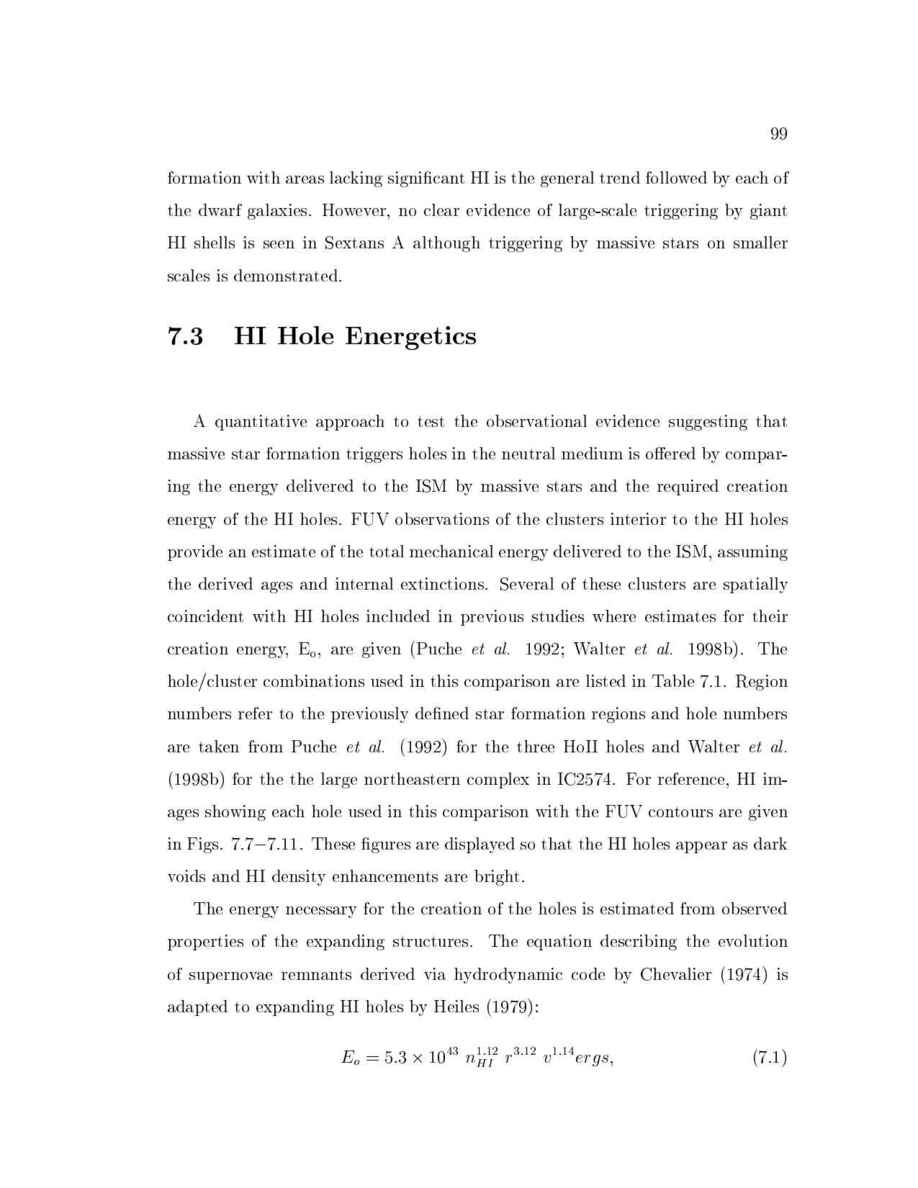Astronomical Applications Department, U.S. Naval Observatory thesis Page 113

99
formation with areas lacking signi cant HI is the general trend followed by each of
the dwarf galaxies. However, no clear evidence of large-scale triggering by giant
HI shells is seen in Sextans A although triggering by massive stars on smaller
scales is demonstrated.
7.3
HI
Hole
Energetics
A quantitative approach to test the observational evidence suggesting that
massive star formation triggers holes in the neutral medium is o ered by compar-
ing the energy delivered to the ISM by massive stars and the required creation
energy of the HI holes. FUV observations of the clusters interior to the HI holes
provide an estimate of the total mechanical energy delivered to the ISM, assuming
the derived ages and internal extinctions. Several of these clusters are spatially
coincident with HI holes included in previous studies where estimates for their
creation energy, E
o
, are given Puche
et
al.
1992; Walter
et
al.
1998b. The
hole cluster combinations used in this comparison are listed in Table 7.1. Region
numbers refer to the previously de ned star formation regions and hole numbers
are taken from Puche
et
al.
1992 for the three HoII holes and Walter
et
al.
1998b for the the large northeastern complex in IC2574. For reference, HI im-
ages showing each hole used in this comparison with the FUV contours are given
in Figs. 7.7
,
7.11. These gures are displayed so that the HI holes appear as dark
voids and HI density enhancements are bright.
The energy necessary for the creation of the holes is estimated from observed
properties of the expanding structures. The equation describing the evolution
of supernovae remnants derived via hydrodynamic code by Chevalier 1974 is
adapted to expanding HI holes by Heiles 1979:
E
o
= 5
:
3
10
43
n
1
:
12
H
I
r
3
:
12
v
1
:
14
er
g
s;
7.1
